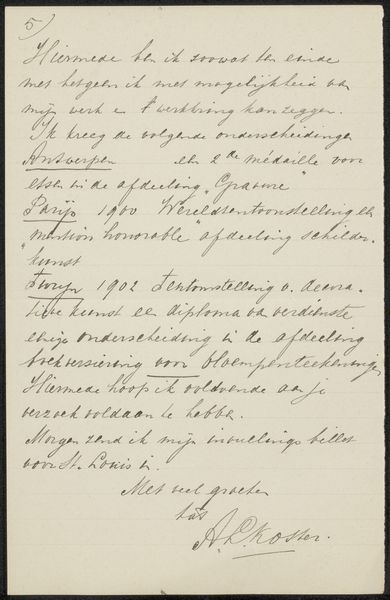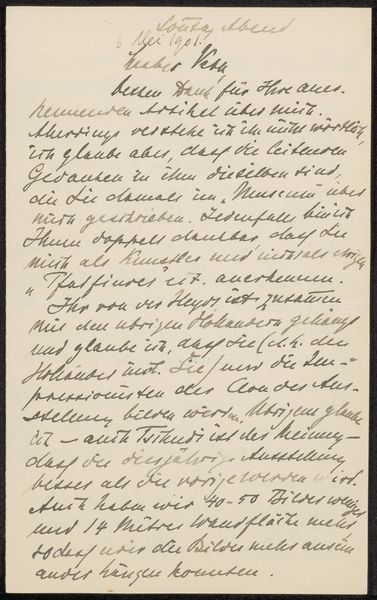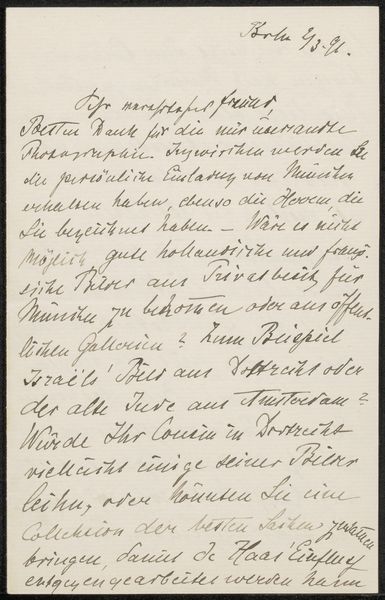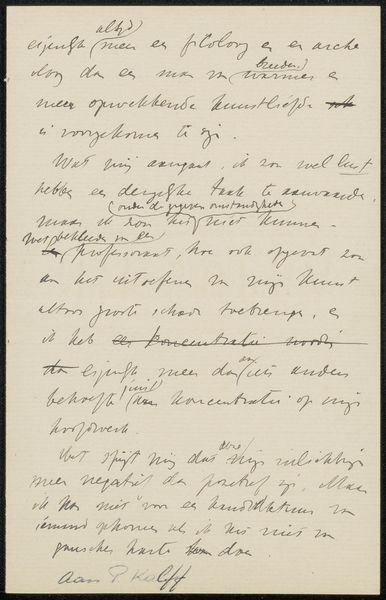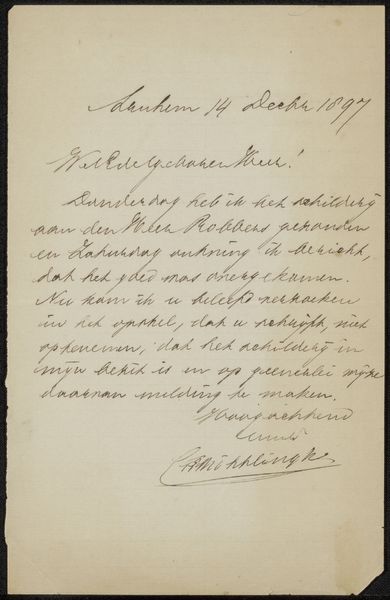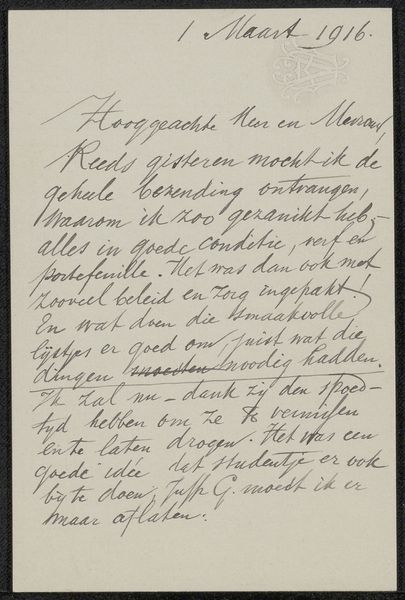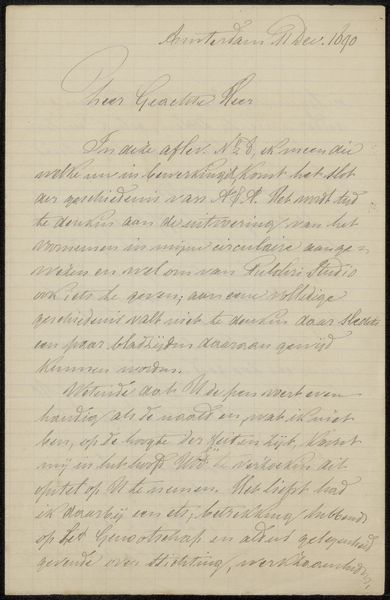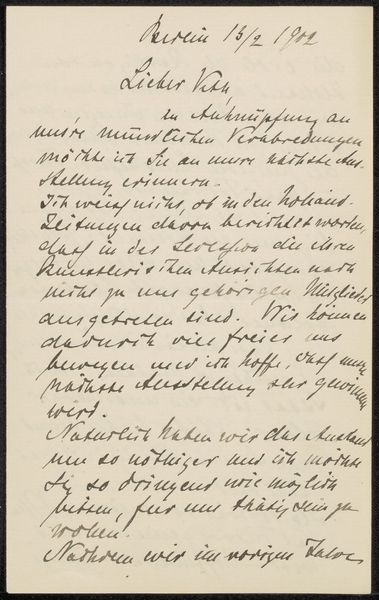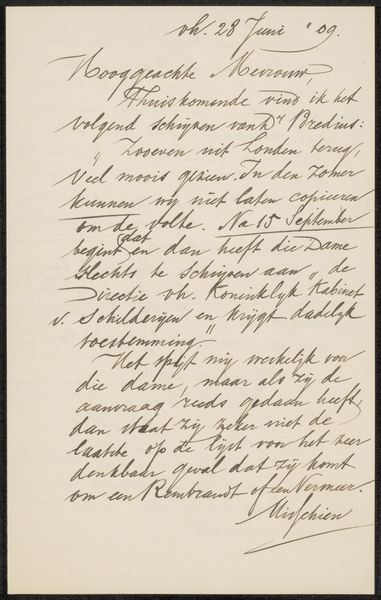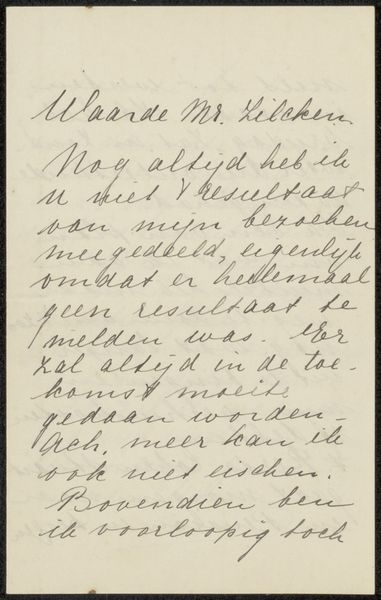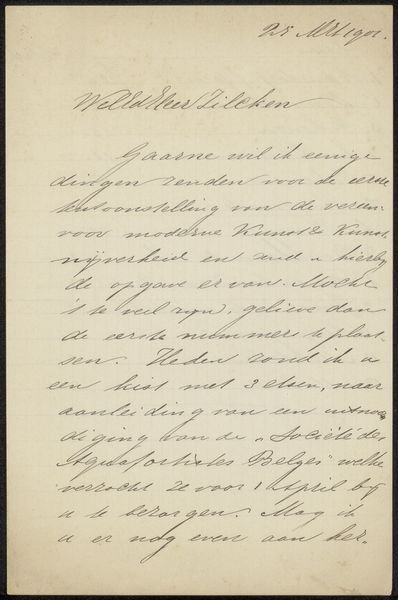
Brief aan Henriette Wilhelmina van Baak en Renée Hélène Laure Zilcken Possibly 1909 - 1923
0:00
0:00
drawing, paper, ink, pen
#
drawing
#
script typography
#
hand-lettering
#
ink paper printed
#
old engraving style
#
hand drawn type
#
hand lettering
#
paper
#
ink
#
hand-drawn typeface
#
pen-ink sketch
#
pen work
#
pen
#
handwritten font
#
calligraphy
Copyright: Rijks Museum: Open Domain
Curator: This is a letter, believed to have been crafted sometime between 1909 and 1923, titled "Brief aan Henriette Wilhelmina van Baak en Renée Hélène Laure Zilcken," authored by Dagmar Frandsen. It's ink on paper. Editor: There's a stark intimacy to it, even just looking at it. The handwritten script, the close-up framing... It feels immediate, unfiltered. Almost melancholic in its simplicity. Curator: Letters have a unique position within socio-political studies because, at times, they were the only voice for some individuals. It could be hypothesized that, without such writing, little may be known of these particular persons, their hopes, and anxieties during the early twentieth century. Editor: And the script itself... it’s almost like a secret code, a dance of symbols unique to the writer. Look at the looping ascenders, the way certain words are emphasized with pressure. This isn’t just information; it’s personality etched onto the page. What strikes me is the formal greeting paired with that intimate script. How do we interpret that blend of formality and closeness? Curator: One has to consider the context of the time period, early twentieth century. Forms of address were fairly rigid among some demographics, reflecting societal conventions more broadly. Editor: Still, there's something universal in the gesture of reaching out, isn’t there? A need to connect. And handwriting is such a potent symbol of human presence, a direct link to the individual who held the pen. Look at the repetition of the letter "h" in some words: it reminds me of the movement of the hand, a metonym. Curator: Indeed, the use of ink on paper suggests a deliberate and thoughtful process. During this period, personal communication still involved tangible objects. The choice of materials mattered; each element was a conscious selection, a part of constructing both content and expression. I will need to note how our understandings are invariably impacted by present assumptions as we approach interpreting a letter, from the early twentieth century. Editor: Seeing that tangible connection across time, I sense a fragile beauty—reminding us how profoundly humans still want to connect across space and time, even within rigid circumstances. The handwritten message carries meaning within our modern, digital society. Curator: Precisely. These insights remind us that even seemingly mundane objects can reveal profound stories about connection, communication, and societal expectations.
Comments
No comments
Be the first to comment and join the conversation on the ultimate creative platform.
